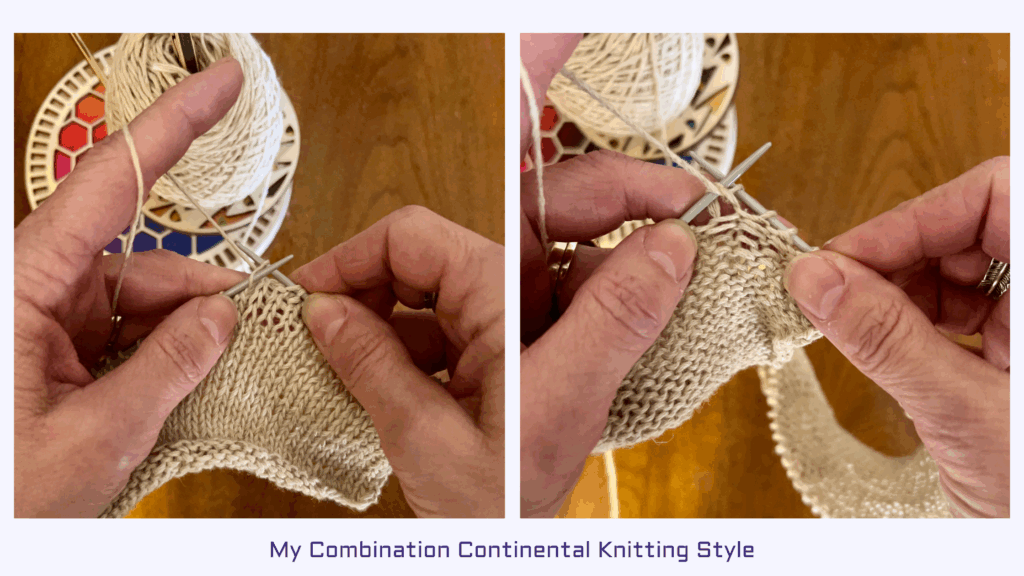
If you’ve seen my recent post, Discovering Continental Combination Knitting, you already know I love exploring knitting styles that bridge traditions. In that post, I shared a fantastic demonstration video and excerpts from Mary Thomas’s classic Knitting Book (1938). Today, we’re diving deeper—into the history of Continental knitting itself, tracing its path from European roots, through wartime shifts, and into its modern resurgence.
Continental knitting, sometimes called German knitting or left-hand knitting, is a style where the yarn is held in the left hand and “picked” with the right needle. It’s known for speed and efficiency, especially in knit-heavy patterns.
Different Continental Styles: Western, Eastern, and Combination

Continental knitting likely evolved from older European handcraft traditions, especially in Germany, the Nordic countries, and Eastern Europe. It became a dominant method across much of mainland Europe by the late 19th and early 20th centuries, praised for its economy of movement.
“This is the better way to work in Flat Knitting…” — Mary Thomas’s Knitting Book (1938)
Sources:
In the mid-20th century, Elizabeth Zimmermann—a German-born knitter who moved to the U.S.—championed Continental knitting through her books, TV programs, and workshops. She presented the method as not only efficient but also creatively liberating, encouraging knitters to experiment with technique.
Sources:
Continental knitting remains the default style in many countries, including Portugal, Greece, Turkey, Bolivia, and Peru, as well as much of continental Europe and parts of Asia.
Modern knitters often switch between Continental and English depending on project needs, blending the best of both worlds.
Continental knitting’s history is a story of cultural migration, adaptation, and revival. Whether you knit East, West, or a mix of both, exploring different methods connects us to the knitters of the past—and expands what’s possible in your own hands.
Share This:
Subscribe to receive updates and your exclusive coupon by email, text, or both—your choice!
You’ll get your 10% off code right away and can unsubscribe from either at any time.
Your 10% off coupon is on its way to your inbox. Check your spam or promotions folder if you don’t see it soon.